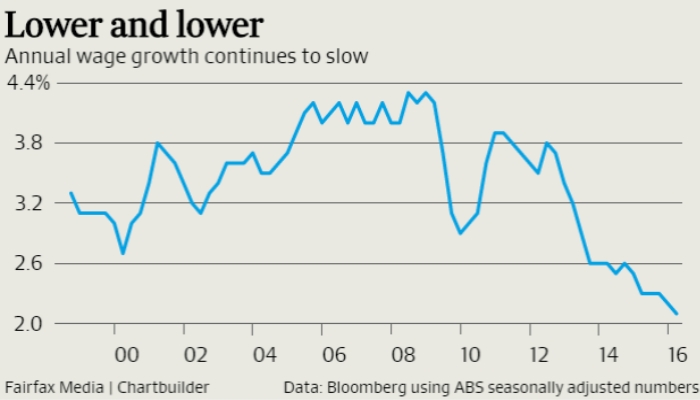
Wages growth at historic lows, youth unemployment high
Wages growth for Australian workers continues to remain at historic lows according to figures recently released by the Australian Bureau of Statistics (ABS).
Growth over the March quarter this year was only 0.4% (adjusted for seasonal variations). That’s even lower than the 0.5% recorded for the preceding December quarter. It means that, on an annual basis, wages are now rising at a rate of 2.1% - the lowest figure since the ABS started its measurements in 1998.
These numbers reflect, in part, the end of the mining boom. During that boom, workers in some sectors were able to win healthy pay rises, especially where skill shortages existed.
Now what employment growth there is tends to be in areas like hospitality, real estate and domestic construction – areas which have relatively low levels of unionisation and high levels of casualisation.
So these numbers are a reminder that where bargaining power is not strong, workers will lose out.
Meanwhile, unemployment remains stubbornly high. While total unemployment levels of 5.7% represent a slight fall from their 6% levels last year, most of the growth has been in part time jobs. Figures released in mid-May show that over the March quarter full time employment fell 9,300 and part time employment increased 20,200, seasonally adjusted.
And youth unemployment remains in double digits. Unions have called on the Turnbull government to put back the billion dollars it cut from apprenticeships, and the $250 million it has cut from the Industry Skills Fund – cuts that have reduced the number of people in apprenticeships by more than 120,000 since 2013.
“The easy way for the government to address unemployment,” ACTU President Ged Kearney said, “is to reverse their disastrous cuts to higher education and skills development.”










